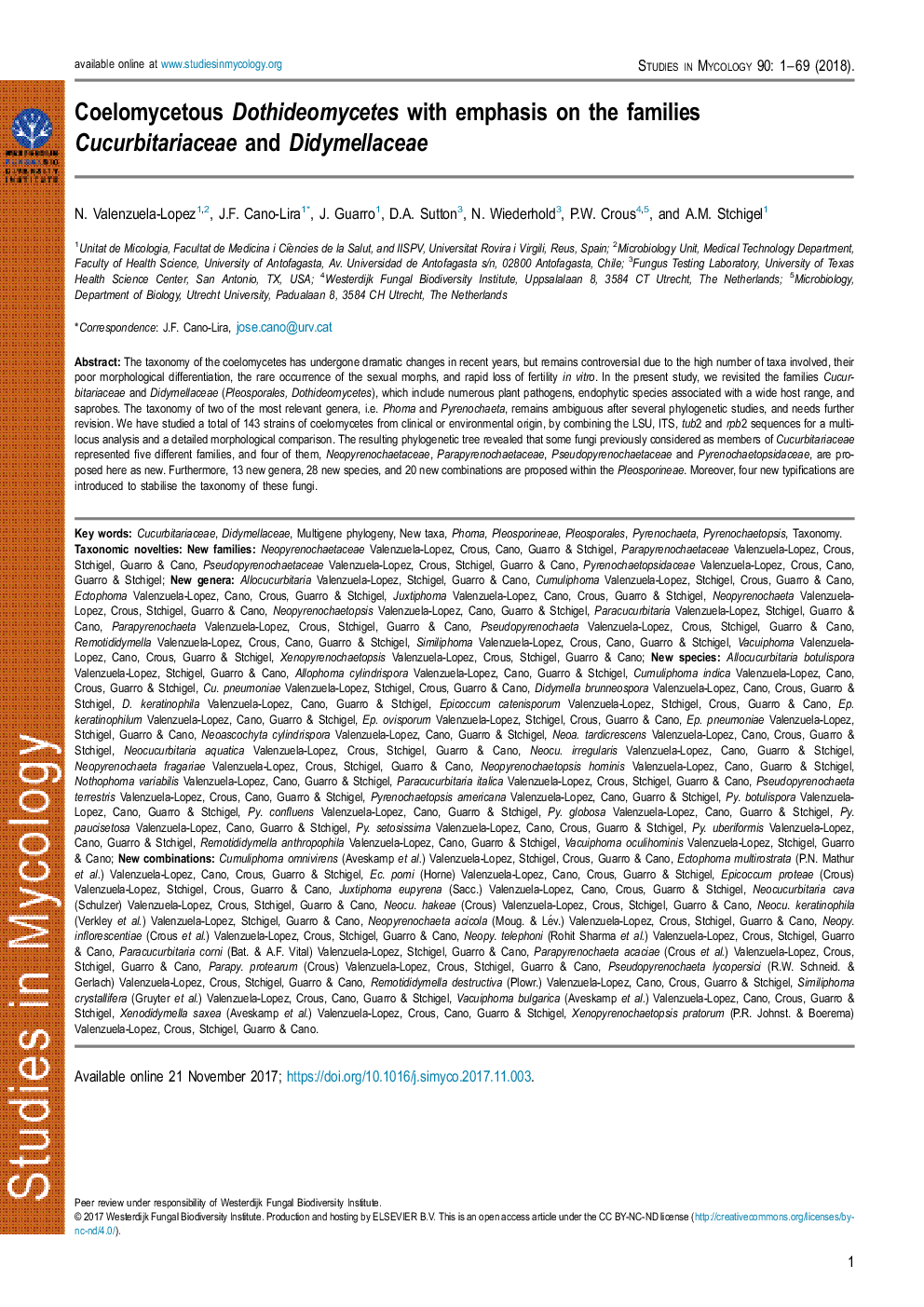| Article ID | Journal | Published Year | Pages | File Type |
|---|---|---|---|---|
| 8844515 | Studies in Mycology | 2018 | 69 Pages |
Abstract
The taxonomy of the coelomycetes has undergone dramatic changes in recent years, but remains controversial due to the high number of taxa involved, their poor morphological differentiation, the rare occurrence of the sexual morphs, and rapid loss of fertility in vitro. In the present study, we revisited the families Cucurbitariaceae and Didymellaceae (Pleosporales, Dothideomycetes), which include numerous plant pathogens, endophytic species associated with a wide host range, and saprobes. The taxonomy of two of the most relevant genera, i.e. Phoma and Pyrenochaeta, remains ambiguous after several phylogenetic studies, and needs further revision. We have studied a total of 143 strains of coelomycetes from clinical or environmental origin, by combining the LSU, ITS, tub2 and rpb2 sequences for a multi-locus analysis and a detailed morphological comparison. The resulting phylogenetic tree revealed that some fungi previously considered as members of Cucurbitariaceae represented five different families, and four of them, Neopyrenochaetaceae, Parapyrenochaetaceae, Pseudopyrenochaetaceae and Pyrenochaetopsidaceae, are proposed here as new. Furthermore, 13 new genera, 28 new species, and 20 new combinations are proposed within the Pleosporineae. Moreover, four new typifications are introduced to stabilise the taxonomy of these fungi.
Related Topics
Life Sciences
Agricultural and Biological Sciences
Ecology, Evolution, Behavior and Systematics
Authors
N. Valenzuela-Lopez, J.F. Cano-Lira, J. Guarro, D.A. Sutton, N. Wiederhold, P.W. Crous, A.M. Stchigel,
